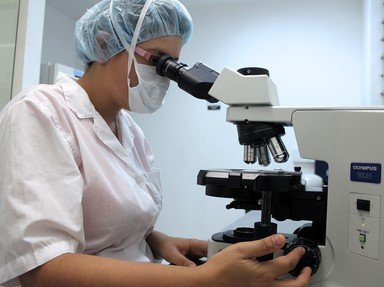Quiz Answer Key and Fun Facts
1. What organic compound is greatly responsible for the fluid-like consistency of the plasma membrane?
2. What part of the plasma membrane functions as channels for hydrophilic substances (such as glucose and salts) so that they can move in and out of the cell?
3. Identify the organelle that is known as the "powerhouse of the cell". Its function is to provide the cell with chemical energy, in the form of ATP (adenosine triphosphate) via cellular respiration.
4. Glycolysis is the breakdown of glucose into smaller molecules needed for either fermentation or cellular respiration. It is also known as the substrate-level of phosphorylation since it uses glucose as a substrate to produce ATP.
Aside from ATP, what is the other major end product of glycolysis?
5. Osmosis is the movement of water molecules passing through a semi-permeable membrane. The direction of the movement of water is influenced by the difference in the concentration between the two solutions separated by the semi-permeable membrane.
If the plasma membrane is the semi-permeable membrane, and water from inside the cell moved to the outside of the cell, what can you say about the solution that is found outside the cell?
6. G-protein is a trimeric protein composed of three sub-units. These three sub-units are the alpha, beta, and gamma sub-units. In its INACTIVE state, GDP or guanine diphosphate is bound to which sub-unit of the G-protein?
7. Transcription is a process where an mRNA is produced using DNA as a template. What is the light-staining region found in the eukaryotic nucleus where transcription is very active?
8. The Golgi apparatus modifies proteins and prepares them for secretion or storage. Which part of the Golgi apparatus do proteins enter?
9. Which of the following is NOT TRUE regarding bacteria?
10. Which of the following is NOT included in the classic cell theory?
Source: Author
AlvarezMD
This quiz was reviewed by FunTrivia editor
crisw before going online.
Any errors found in FunTrivia content are routinely corrected through our feedback system.
